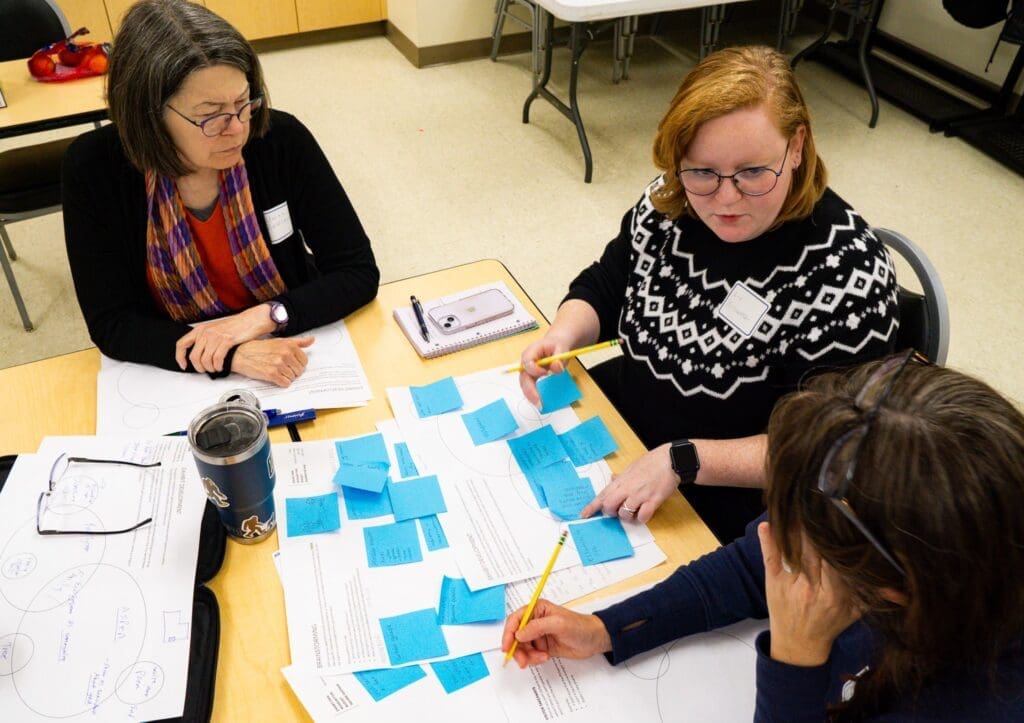The below post was written by Liv Wisnewski, Curator of Collections and Exhibits, Pratt Museum:
Building Community, The Role of the Museum, and Moving to Alaska

As not only a new curator, but a new resident of the State of Alaska, I am grateful for the opportunity to attend the Museums Alaska Conference in Fairbanks, held at the end of September. Thank you to Museums Alaska for the generous scholarship that allowed me to attend.
The conference granted me wonderful networking opportunities and the chance to integrate into the professional community right away. The workshops I attended were engaging and informative, and everyone was incredibly generous with their time and knowledge.
I found the speech by keynote speaker Lisa Sasaki, Deputy Undersecretary of Special Projects at the Smithsonian Institution to be particularly thought provoking. As I step into the role of Curator of Collections and Exhibitions at the Pratt Museum in Homer I find the topic of building community particularly relevant. The Pratt Museum is at a turning point where building our community is paramount. In some ways, we’re starting over from scratch as the museum has suffered due to extended closure – first from renovations in 2018 and 2019, and then due to the Coronavirus Pandemic in 2020 – and is only now getting back to its previous capacity.
This active revitalization is an exciting opportunity, but one that takes work. It requires that we as industry professionals rethink the role of the museum, and the ways we interface with our stakeholders. As we move forward in our efforts, we at the Pratt Museum have an opportunity to reconsider how we engage our visitors, and how we position ourselves in the community. Essentially, we have the chance to fully live out the question Lisa posed in her talk; “If you had the ability to start over from scratch, what one thing would you do to better build community?”
Ultimately, these conversations stem from an even more basic question, what is the role of the museum? For the longest time, the traditional stance is that the role of the museum is to preserve, to educate, to research, and to showcase. All of these are noble goals, but they also contain an inherent barrier to community building. The longstanding role of the museum as a place of expertise and top down education creates an inherent hierarchy between “museum people” (i.e. staff and volunteers) and patrons or visitors. The idea being that those internal to the museum are the experts, and through planned programming, carefully curated exhibits, and controlled access to spaces and collections, the museum tells the public what it is they need to pay attention to and know. Through this lens, everything that is “good” about the museum, or justifies its existence, is what it produces, what it provides and puts out, rather than what it might bring in. But in order to truly build community, the flow of information, ideas, knowledge, and expertise needs to be one of exchange. Ideally, gone are the days of the ivory tower, the presentation of the cabinet of curiosities, and the understanding that museums are spaces you go to “get educated” and never to do the educating.
Of course, none of this is to say the preservation and education missions of museums are failings, or need to be set aside. These are both noble and valuable goals to uphold. I strongly believe it is necessary work to hold items in the public trust, to protect and care for them for posterity. Furthermore, I believe in the ways that museums act as spaces of continued learning, places to grow curiosity and showcase that learning happens in our everyday lives, not only behind school desks. However, the reason I love this field and I love this work is because I also am constantly learning. There will never be a point where I have learned all there is to know, and there will always be something each new person who comes to the museum can teach me. Recognizing the value of expertise outside of the museum, and the lived experience of our visitors is one of the first steps to changing the ways we integrate into our communities. To foster the connections we have and are slowly building, the museum industry must look beyond its traditional roles, must learn how to build trust, offer support, and listen and respond to community members.
For me, one of the most poignant quotes from Lisa’s presentation was this; “To build community, we must build participation by individuals in our museums.” In my mind, this homes in on the essence of community mindedness in museums, and the essential truth of building communities as a practice. Every community you have ever been a part of, as an institution, as a museum professional, as a visitor, a patron, a guest, a researcher, they are made up of individuals. There is no monolithic “community” out there that the perfect exhibit will attract to the museum, no mass herd of ideal volunteers who will show up if only you put on the right educational programming. There are only individuals, nuanced and complex people who have a variety of experiences with museums as institutions. In order to really bring our communities into our museums, to make them invested, make them comfortable and safe, and to turn our museums into what they can be at their best – shared spaces – we need to approach individuals where they are. Our relationships, and our community, will flow from there.